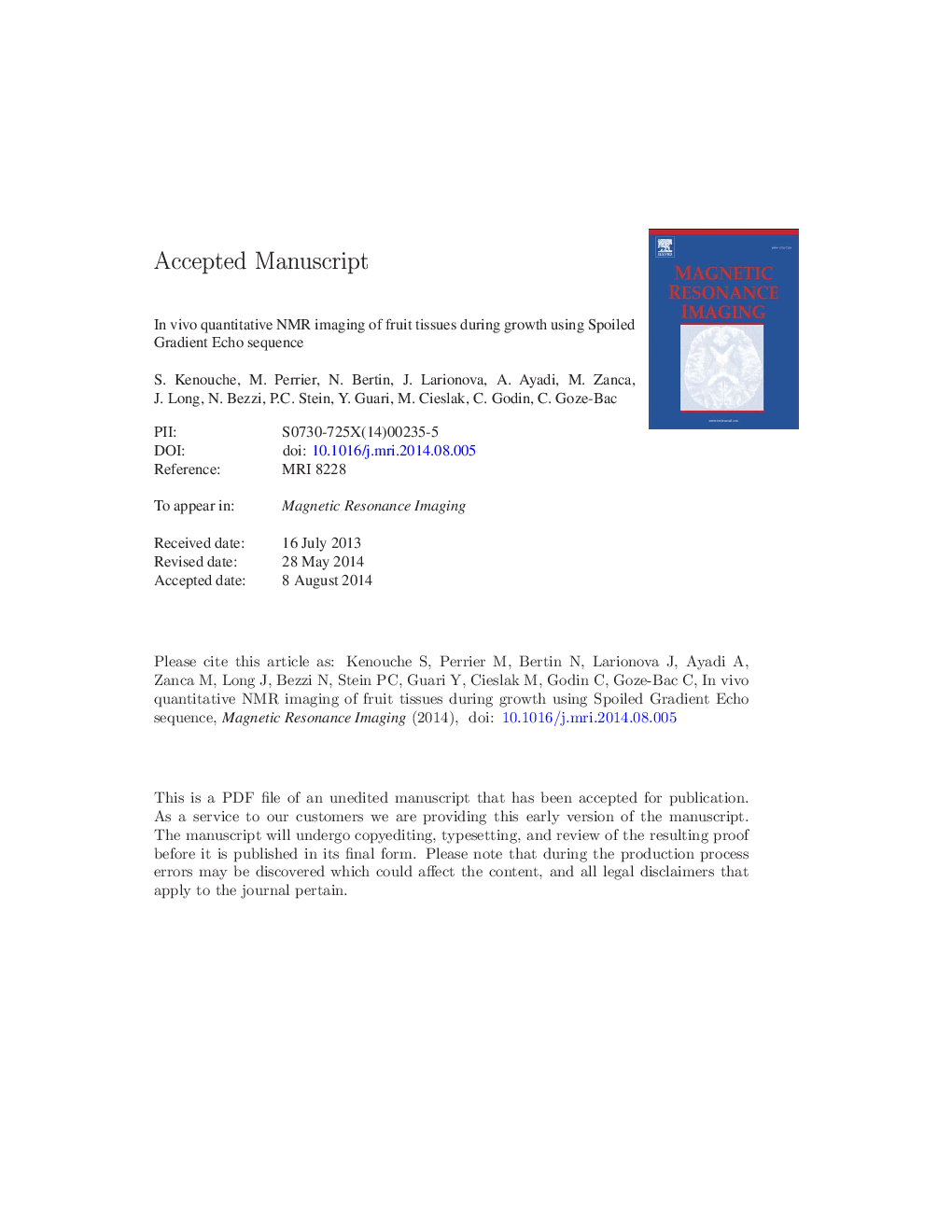| Article ID | Journal | Published Year | Pages | File Type |
|---|---|---|---|---|
| 10712527 | Magnetic Resonance Imaging | 2014 | 39 Pages |
Abstract
Nondestructive studies of physiological processes in agronomic products require increasingly higher spatial and temporal resolutions. Nuclear Magnetic Resonance (NMR) imaging is a non-invasive technique providing physiological and morphological information on biological tissues. The aim of this study was to design a robust and accurate quantitative measurement method based on NMR imaging combined with contrast agent (CA) for mapping and quantifying water transport in growing cherry tomato fruits. A multiple flip-angle Spoiled Gradient Echo (SGE) imaging sequence was used to evaluate the intrinsic parameters maps M0 and T1 of the fruit tissues. Water transport and paths flow were monitored using Gd3 +/[Fe(CN)6]3 â/D â mannitol nanoparticles as a tracer. This dynamic study was carried out using a compartmental modeling. The CA was preferentially accumulated in the surrounding tissues of columella and in the seed envelopes. The total quantities and the average volume flow of water estimated are: 198 mg, 1.76 mm3/h for the columella and 326 mg, 2.91 mm3/h for the seed envelopes. We demonstrate in this paper that the NMR imaging technique coupled with efficient and biocompatible CA in physiological medium has the potential to become a major tool in plant physiology research.
Related Topics
Physical Sciences and Engineering
Physics and Astronomy
Condensed Matter Physics
Authors
S. Kenouche, M. Perrier, N. Bertin, J. Larionova, A. Ayadi, M. Zanca, J. Long, N. Bezzi, P.C. Stein, Y. Guari, M. Cieslak, C. Godin, C. Goze-Bac,
